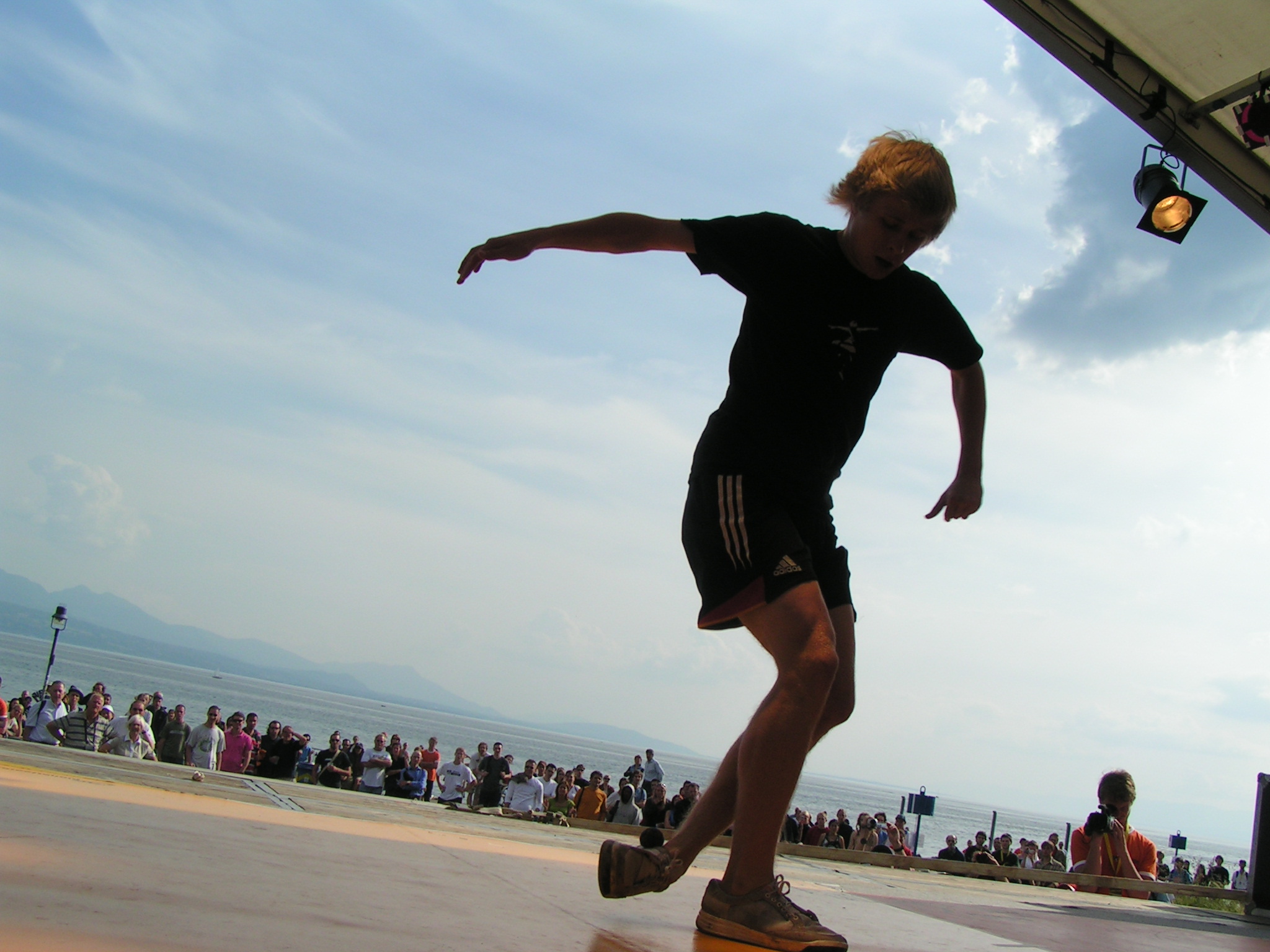Footbag Freestyle has evolved into a very technical competitive discipline.
Players compete by choreographing routines, performing very difficult combinations of footbag tricks to music (much like figure skating).
Routines are judged along four axes:
Presentation
The artistic and/or overall presentation of the routine, with a balance of the five required aspects of presentation: Music and Movement, Floor, Planes and Travel, General Form, Distribution and Linking, and Personality and Originality.[1]
Composition
The composition of the routine in terms of the technical variety executed by the player(s), as described in 504.05 Run Variety. This criterion refers to the technical “breadth” of the player(s) — how many different types of moves (from a purely technical perspective) are incorporated into the routine and successfully executed.[2]
Difficulty
The amount of technical difficulty, relative to the amount of risk, the player(s) execute within their routine. This includes both Run Difficulty and Run Density. A player who links very difficult moves continuously throughout the routine will be considered to have substantially more difficulty than a player who keeps to a few difficult moves they can hit consistently linked together by much easier moves and/or basic kicks/delays. [3]
Execution
The technical execution of the routine, taking into account general execution quality relative to a flawless technique. As defined in 504.07 Run Execution, players should consider the following three aspects of execution: Drops, Control, and Form. [4]
Other forms of competitive and non-competitive freestyle exist.
Including “shredding” in which players attempt to perform as many tricks in a row as possible, of a given add-value or above. They also attempt to show variety in their strings, along several dimensions.

